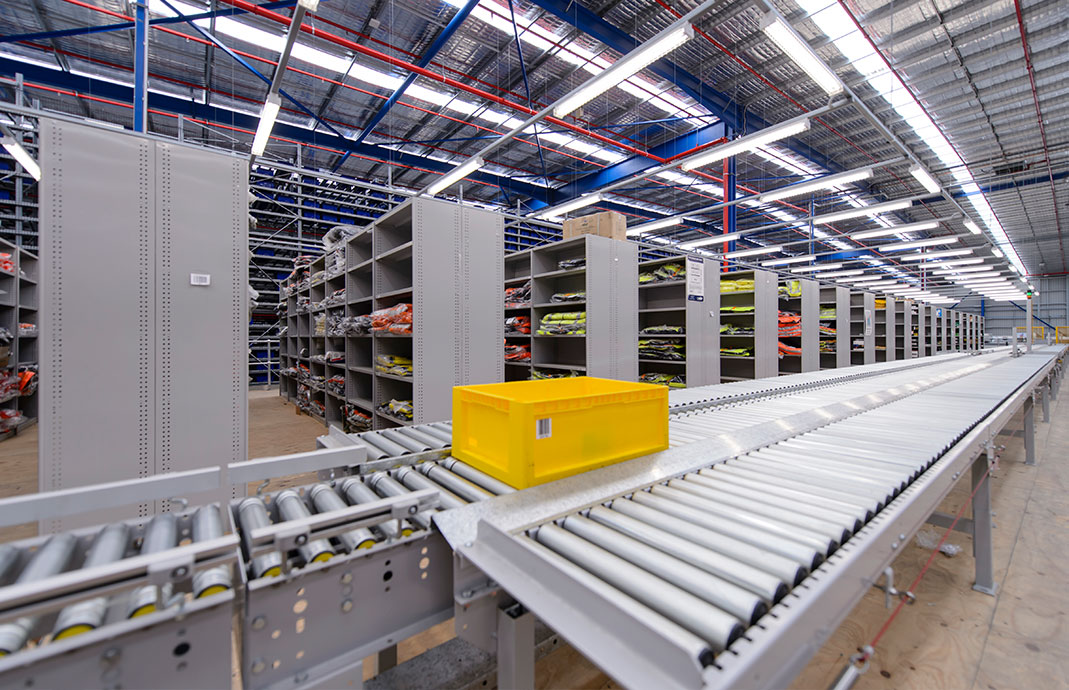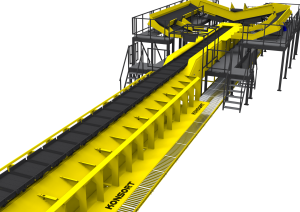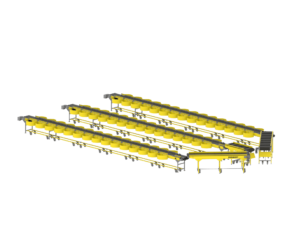Warehouse process automation is a key element in improving the efficiency of logistics companies and warehouses. The implementation of automated conveyor systems for material transportation allows significant time reduction in handling, lowers labor costs, and enhances overall productivity. The automated transportation system using conveyors helps reduce the risk of product damage and increases warehouse safety.
Types of equipment for warehouse process automation:
- Belt Conveyors:
- Models for transporting various types of goods, from bulk materials to boxes and containers.
- Specialized belts for increased strength and grip for handling heavy or delicate goods.
- Roller Conveyors:
- Turntable, lift, and multi-level conveyors for transporting boxes, containers, pallets, and other items.
- Models with automatic sorting along the line for improved efficiency.
- Lifting and Transport Mechanisms:
- Integration of vertical and inclined conveyors for transporting goods across different warehouse levels.
- Systems for automatic loading and unloading of products.
- Automatic Sorting Systems:
- Installation of sensor systems for the automatic sorting of products by weight, size, and other characteristics.
- Selective systems for distributing goods to corresponding warehouse zones.
Benefits of Automated Warehouse Systems:
- Time Savings: Reduces the time spent on transporting goods through automation and the integration of various systems.
- Cost Reduction: Reduced need for labor and less human error, leading to lower costs for handling and transporting goods.
- Increased Safety: Automation reduces the risk of product damage and injury to workers handling heavy goods.
- Optimization of Warehouse Space: Conveyor systems help utilize vertical space more efficiently, increasing storage capacity and improving organization.
- Enhanced Productivity: Increased throughput thanks to reduced processing time for goods.
Implementation Case 1
Company: Logistics Service LLC
Industry: Logistics Center
Solution: Installation of an automated conveyor system for pallet and box transport.
Description: The company approached KONSORT to create an automated warehouse line. The system included belt conveyors and roller conveyors, as well as lifting mechanisms for moving goods between different levels of the warehouse.
Results:
- Productivity: Increased goods processing by 40%.
- Savings: Reduced labor costs by 25%.
- Profitability: The investment paid off within 2 years.
Implementation Case 2
Company: Interlogistics LLC
Industry: Warehouse Services for Retail
Solution: Installation of a conveyor line to automate product sorting and movement within the warehouse.
Description: The client ordered the installation of an automated sorting and transportation line. The line included belt conveyors for transporting packaging materials and roller conveyors for palletized goods.
Results:
- Productivity: Improved goods handling by 50%.
- Savings: Reduced transportation costs by 30%.
- Profitability: Investment paid off in 1.5 years.
Who it’s suitable for:
- Logistics companies.
- Warehouse complexes.
- Retail networks and product suppliers.
- Manufacturers requiring efficient warehouse automation.
- Companies handling heavy and oversized goods.
Conclusion: Creating an automated warehouse system for goods transportation is an effective step towards optimizing logistics processes and reducing costs. Implementing conveyor systems helps increase productivity, minimize risks, and improve warehouse safety. KONSORT offers innovative solutions that will help you achieve the best results in warehouse process automation. Choosing an automated system for your warehouse is an investment in your business’s future.


















































